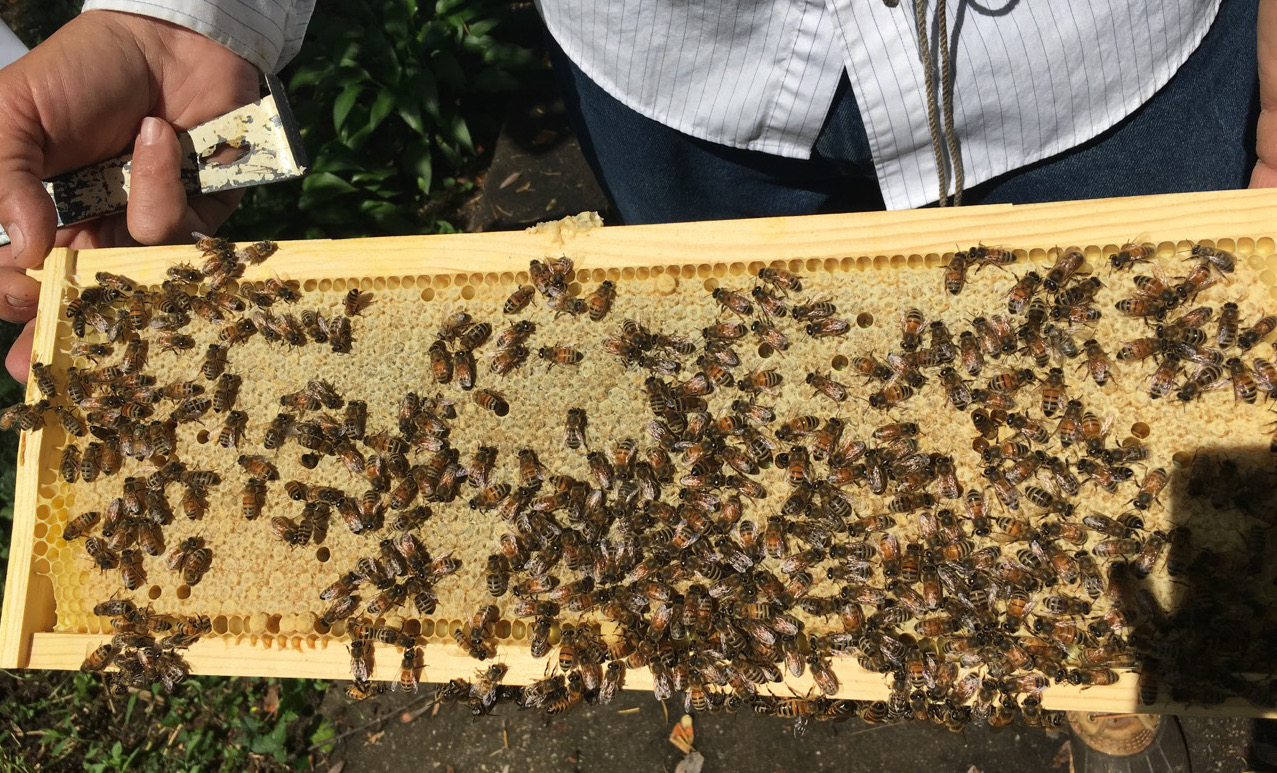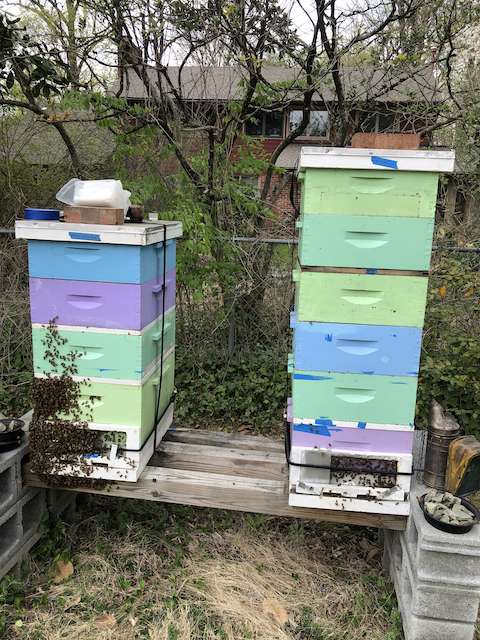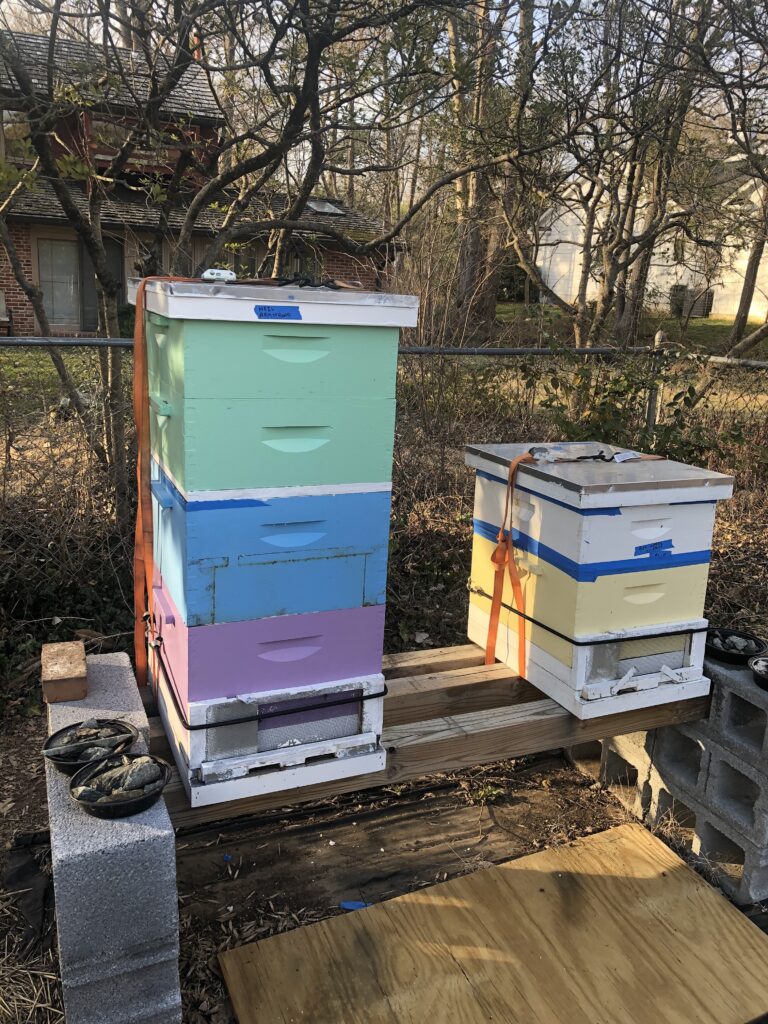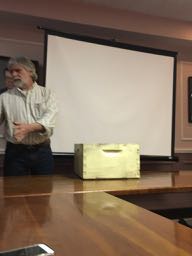The weather has been so unusual this year. It feels like we never had winter here in Bethesda. Negligible snowfall, relatively few long stretches of cold weather. Flowers and trees blooming three weeks earlier than usual. Our beekeeping season has also been affected by the weird weather. I don’t know whether it will make for a good season or a bad one.
We successfully overwintered nine colonies out of twelve. That’s a 25% loss, but we will build up by making splits. We’re back to twelve already. I hope to make a batch of new queens from one of our more successful genetic lines and create some extra colonies to overwinter and/or sell to other beekeepers. Part of being a “sustainable” beekeeping business is to avoid purchasing bees every spring to replenish lost stock.
All our hives are in the Bannockburn neighborhood. We have three host families that provide space for a “micro apiary” — two to four hives on a simple hive stand. I also keep hives in my back yard. We have a beautiful tree canopy in this neighborhood, which means that there is plenty of forage for our honey bees, and all the native pollinators.
We are already harvesting some honey this year. Many beekeepers in this region wait until July 4 to harvest all the surplus honey that the bees have. There are advantages and disadvantages to this technique. Beekeeping is really a mixture of “art and science” as the expression goes. We have learned a great deal about honey bee biology, and how the bees interact with the flowers and trees for what they need. We have no clue what the weather is going to be like in the summer or the fall of this year, or the upcoming winter. The bees however, are working like mad to prepare for the upcoming winter, even on this second day of May. We beekeepers also have to be thinking about the winter already.
Speaking of May … I would like to encourage everyone to consider participating in “No Mow May” this year. The idea is to not mow your lawn for the month of May, to allow the beneficial weeds to grow and bloom and provide a food source for bees and other pollinators. This helps native bees and pollinators. Our honey bees are right now filling their hives with nectar from flowering trees, not the flowers at ground level. Native bees are emerging and need forage too. Please read the information on the Bee City site and consider leaving your lawn mower in the garage for the month, or suspending your lawn service. If you can’t bear the idea of letting all your lawn grow wild, consider leaving a small meadow area, or planting a wildflower garden, to help feed our native pollinators. The honey bee can fly 3 to 5 miles to find good forage sources. Many native pollinators must find forage much closer to their nest in order to survive and reproduce.
Enjoy the outdoors this spring!



